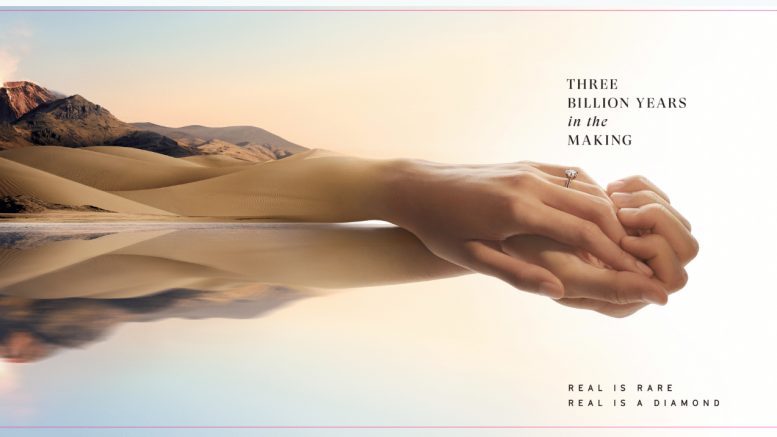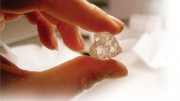Following a strong first half of 2018, the balance of the year and most of 2019 was disappointing for the diamond industry. The most recent 18-month stretch has been described as a “very challenging environment” and even a “crisis.” The third significant industry lull in the decade-and-a-half since the dismantling of the De Beers monopoly seemingly indicates that the diamond industry is yet to find sound, sustainable footing in a new era.
A tightening of credit to diamond manufacturers followed the surfacing of a widely publicized alleged $2-billion fraud by well-known Indian industry titans Nirav Modi and Mehul Choksi in mid-2018. That credit tightening, in part, led to accelerated industry-wide mid-stream inventory deleveraging through 2019.
An estimated at $10 billion, or approximately 25% of all inventory held by the mid-stream segment of the industry, was forced downstream as many manufacturers were unable to retain previous levels of finance and were pressured to scale down operations and shrink balance sheets. The flood of excess mid-stream supply more than offset a 5% year-over-year decline in mined diamond volume in 2019.
While the industry has since actively worked through the indigestion, demand challenges including an acceleration of the trade war between the U.S. and China, the industry’s two largest end-consumer markets, has stifled the process. Further, widespread, multi-month protests in Hong Kong, referred to as the Anti-Extradition Law Amendment Bill Movement, have impacted retail sales in the ever-important market and also interfered with business-to-business industry trade. In addition, a broad economic slowdown in Europe and a global trend towards negative interest rates has boosted the U.S. dollar, which has also pressured global end-consumer diamond demand in recent quarters.
Looking to 2020, if the global economic picture stabilizes or hopefully even improves – the U.S. would need to avert a recession and China would need to maintain a mid-single-digit growth rate – the diamond industry could finally be on much more stable footing by mid-year as industry-wide inventories approach much more sustainable levels. At an estimated $30 billion of inventory, mid-stream stocks are the lowest since 2011, coincidently the last time diamond manufacturing was notably lucrative.
Upstream players, led by De Beers and Alrosa, began building inventory in the second half of 2019 in order to support the market. However, both players were starting from relatively normalized inventory levels at the time and the excess stock recently accumulated should be manageable as it is not estimated to exceed 2015 levels, the high watermark in recent years following the mid-decade slowdown in China.
While macro-economic developments, including some of those mentioned above, will continue to impact end-consumer diamond demand and play a major role in health of the industry in 2020, here are three industry specific catalysts that could have a noticeable impact on the trade as well.
The DPA’s “3 Billion Years in the Making” campaign
In the fourth quarter of 2019, the Diamond Producers Association (DPA) debuted its latest campaign titled “The Diamond Journey” with the tagline “3 billion years in the making.” 2020 marks the fifth year since the group was established and the third consecutive year that the budget has exceeded $50 million. The 2020 budget alone is estimated to approach $100 million, the highest yet, but still short of the estimated $200-250 million that De Beers was spending annually during the monopoly era via the “A Diamond is Forever” campaign.
The result of large category marketing strategies such as this can be slow and gradual in nature, but can leave a lasting impact on a consumer’s perception of a product if communicated effectively.
It has now been over a decade since the “A Diamond is Forever” campaign was retired and consumers’ positive perception of diamonds has faded. However, now a few years into the reintroduction of generic diamond marketing, results should begin to show, especially in the three primary markets being targeted: the U.S., China and India.
Alrosa’s “Luminous Diamonds” campaign
In September 2019, Alrosa said it was in talks with several jewelers about joint marketing the company’s strongest fluorescent diamonds as “Luminous Diamonds.” Fluorescence is most prominent in Russian and Canadian diamonds, which notably tend to be found near the Arctic, but fluorescence is also found in stones outside of the Far North and is estimated to be present in as much as a third of all diamonds globally.
Diamonds with “strong” fluorescence, the focus of Alrosa’s campaign, represent as much as 5-10% of global supply.
While traditionally fluorescence has been seen as a negative attribute as it can make a diamond appear “milky” or “oily” in direct sun or UV light, the characteristic also makes a diamond mysteriously glow under a black light, ideal for a club or party scene – which fits well with the industry’s intention of directing more marketing towards younger demographics. Further, most natural diamonds fluoresce blue, while most man-made diamonds fluoresce orange, green or blue-green, so fluorescence is potentially another attribute that the natural diamond industry can use to differentiate its product from man-made.
Alrosa said it expects the product line to be available in early 2020 with the U.S. and China being the initial target markets.
Argyle officially closing
Easily the industry’s most anticipated supply catalyst, Rio Tinto’s (NYSE: RIO; LSE:RIO) Argyle mine in Australia is finally set to officially close in 2020. In June 2019, management told media outlets that in late 2020, the company will be stopping operations and will start the rehabilitation of the site. The mine, which at one point accounted for almost half of global diamond output in volume, has produced 10-15 million carats in recent years, representing a high-single-digit percentage of the world’s output. An estimated three quarters of Argyle’s output is brown in colour, lower in quality or smaller in size, the categories of diamonds that have been under the most price pressure in recent
years. Argyle supply coming offline will further balance what has been an oversupplied diamond market for most of the last decade. The implication, which will likely be seen as a positive catalyst for the industry, will likely garner a sizeable amount of media attention which could boost industry sentiment and reinforce consumers’ perception of natural diamonds as a fleeting, non-renewable resource, and thus rare and valuable.
— Paul Zimnisky, CFA is an independent diamond industry analyst and consultant based in the New York metro area. For regular analysis of the diamond industry please consider subscribing to his State of the Diamond Market, a leading monthly industry report. Paul can be reached at paul@paulzimnisky.com and followed on Twitter @paulzimnisky.
Disclosure: At the time of writing Paul Zimnisky held a long position in Signet Jewelers, Lucara Diamond, Mountain Province Diamonds and North Arrow Minerals. Please read full disclosure at www.paulzimnisky.com.
— This article originally appeared in the November 2019 issue of Diamonds in Canada.




Be the first to comment on "Why 2020 could be a better year for diamonds"